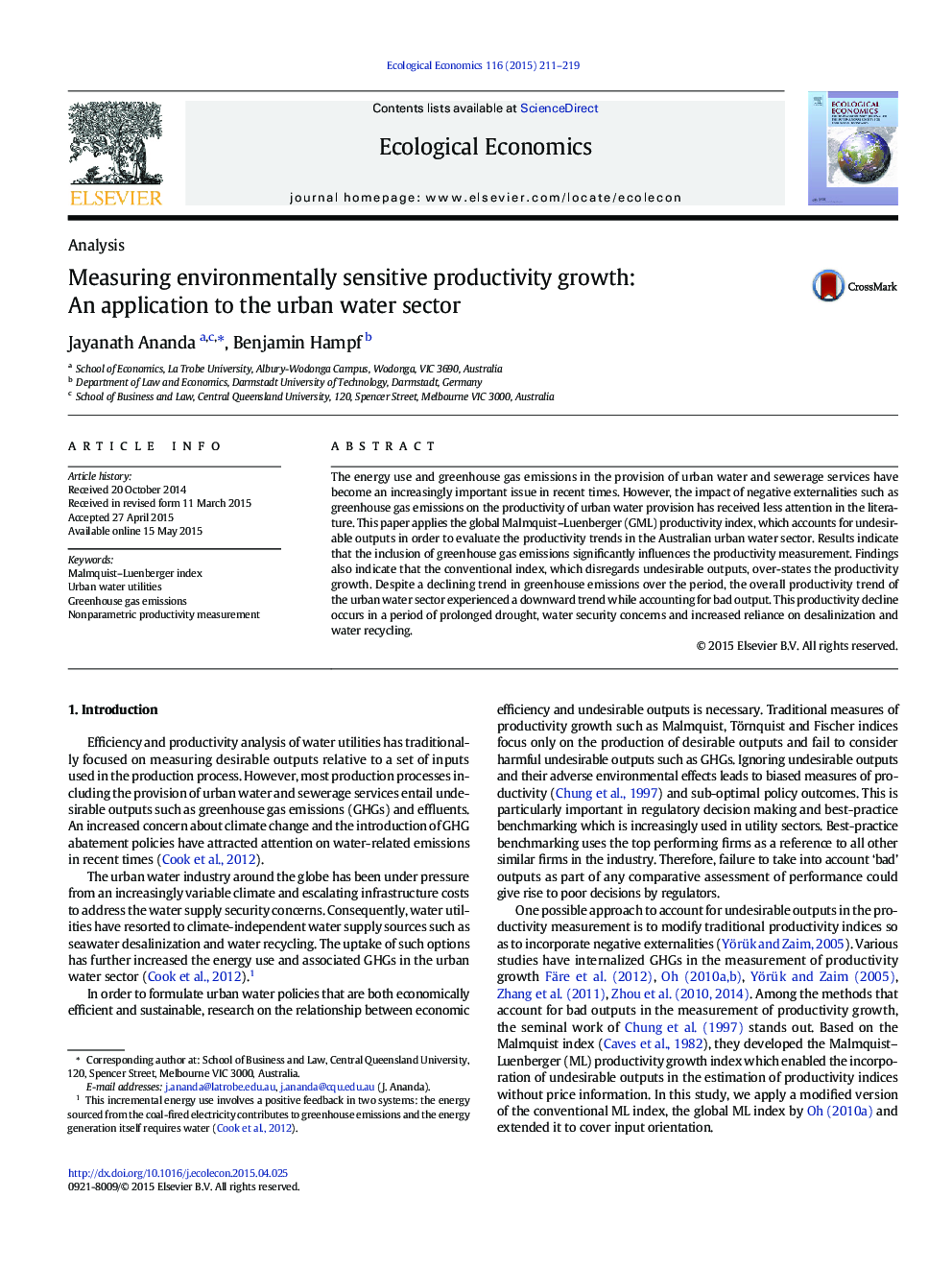| کد مقاله | کد نشریه | سال انتشار | مقاله انگلیسی | نسخه تمام متن |
|---|---|---|---|---|
| 5049440 | 1476363 | 2015 | 9 صفحه PDF | دانلود رایگان |
- We adapt the global Malmquist-Luenberger index to an input-oriented analysis.
- An analysis of productivity trends of Australian urban water utilities is conducted.
- We apply bootstrap methods to correct for the bias in nonparametric productivity estimates.
- We find statistically significant different results when GHG emissions are included in the analysis.
- The conventional Malmquist index, which disregards GHGs, over-states the productivity growth.
The energy use and greenhouse gas emissions in the provision of urban water and sewerage services have become an increasingly important issue in recent times. However, the impact of negative externalities such as greenhouse gas emissions on the productivity of urban water provision has received less attention in the literature. This paper applies the global Malmquist-Luenberger (GML) productivity index, which accounts for undesirable outputs in order to evaluate the productivity trends in the Australian urban water sector. Results indicate that the inclusion of greenhouse gas emissions significantly influences the productivity measurement. Findings also indicate that the conventional index, which disregards undesirable outputs, over-states the productivity growth. Despite a declining trend in greenhouse emissions over the period, the overall productivity trend of the urban water sector experienced a downward trend while accounting for bad output. This productivity decline occurs in a period of prolonged drought, water security concerns and increased reliance on desalinization and water recycling.
Journal: Ecological Economics - Volume 116, August 2015, Pages 211-219
